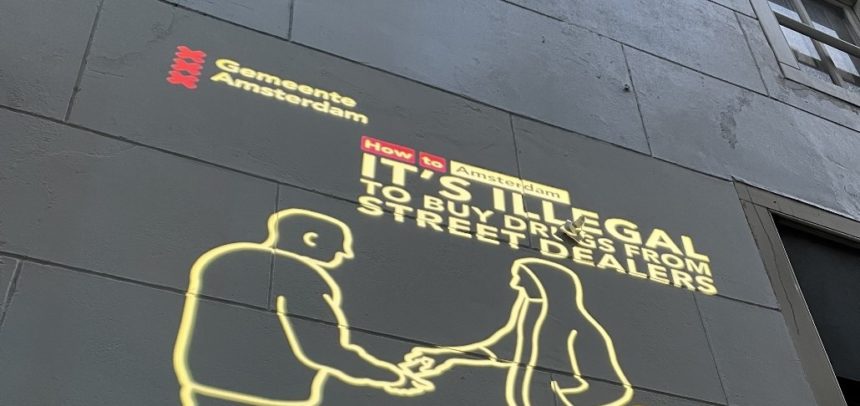Fewer drug dealers present after Light-based interventions are installed in Red Light District

The Red-Light District is a world-famous neighborhood in Amsterdam that countless tourists visit each year to experience the pleasures it offers. Within the Red-Light District there is a high concentration of street dealers trying to sell illegal narcotics to these tourists. In recent years, there has been an increasing number of complaints from visitors, residents and shops operating in the area about the nuisances from these drug dealers. This development has prompted the Municipality of Amsterdam to investigate how to discourage the dealers from selling in certain areas.
Systematically observing the presence of dealers and public disturbances
In August 2022, the City of Amsterdam initiated an intervention to decrease the public disturbances due to drug dealing at the Monnikenstraat in Amsterdam. The NSCR was asked to investigate if light projectors installed throughout the area, which display texts discouraging tourists from purchasing drugs from street dealers, lowers the presence of street dealers and the number of public disturbances in the area. Researchers used two CCTV cameras that had an overview of the Monnikenstraat to systematically observe the presence of dealers and public disturbances before and after the light-based intervention was implemented. They conducted one minute of focused observation every 15 minutes from 20:00 – 04:00 from Wednesday to Saturday for three weeks.
Presence of drug dealers not a good predictor of public disturbances
The analysis of this data showed that after the implementation of the light-based intervention there were statistically significantly fewer dealers in the area, while the public disturbances remained unchanged. This relationship was present when controlled for the number of people in the street, the day of the week, and the time of the day. This seems to indicate that the light-based interventions successfully discouraged drug dealers from selling in the Monnikenstraat during the observed intervention period, but did not impact the presence of observable public disturbances. It was also found that the presence of drug dealers was not a good predictor of public disturbances, which might indicate that public disturbances in the area have other sources than the dealers working there. This might explain why the public disturbances did not decrease after the light-based interventions were installed.
Publication details and further reading
Ejbye-Ernst, P., Sexton, M. Thomas, J. & Rosenkrantz Lindegaard, M. (2022). Evaluation of light-based interventions related to drug dealing and public disturbances. NSCR
Actuele berichten

